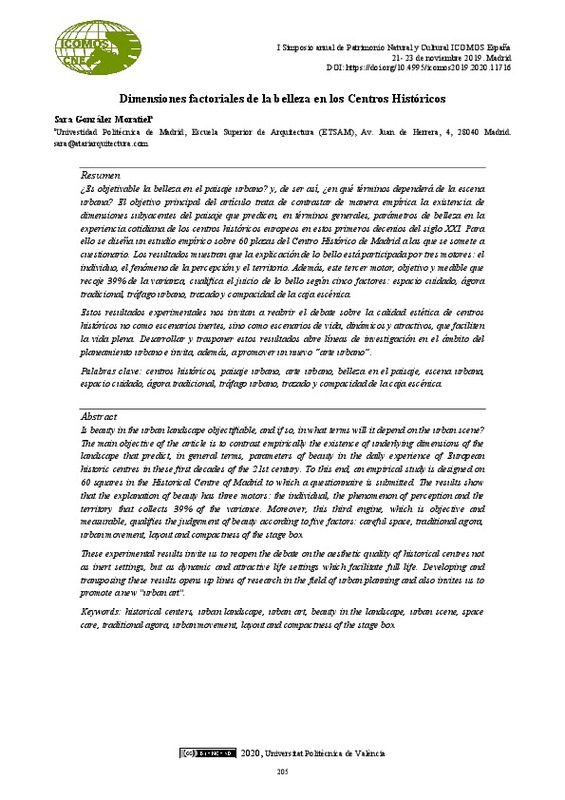JavaScript is disabled for your browser. Some features of this site may not work without it.
Buscar en RiuNet
Listar
Mi cuenta
Estadísticas
Ayuda RiuNet
Admin. UPV
Dimensiones factoriales de la belleza en los Centros Históricos
Mostrar el registro completo del ítem
González Moratiel, S. (2021). Dimensiones factoriales de la belleza en los Centros Históricos. En I Simposio anual de Patrimonio Natural y Cultural ICOMOS España. Editorial Universitat Politècnica de València. 205-214. https://doi.org/10.4995/icomos2019.2020.11716
Por favor, use este identificador para citar o enlazar este ítem: http://hdl.handle.net/10251/160354
Ficheros en el ítem
Metadatos del ítem
| Título: | Dimensiones factoriales de la belleza en los Centros Históricos | |
| Autor: | ||
| Fecha difusión: |
|
|
| Resumen: |
[EN] Is beauty in the urban landscape objectifiable, and if so, in what terms will it depend on the urban scene?
The main objective of the article is to contrast empirically the existence of underlying dimensions of ...[+]
[ES] ¿Es objetivable la belleza en el paisaje urbano? y, de ser así, ¿en qué términos dependerá de la escena urbana? El objetivo principal del artículo trata de contrastar de manera empírica la existencia de dimensiones ...[+]
|
|
| Palabras clave: |
|
|
| Derechos de uso: | Reserva de todos los derechos | |
| ISBN: |
|
|
| Fuente: |
|
|
| DOI: |
|
|
| Editorial: |
|
|
| Versión del editor: | http://ocs.editorial.upv.es/index.php/icomos_es/icomos2019/paper/view/11716 | |
| Título del congreso: |
|
|
| Lugar del congreso: |
|
|
| Fecha congreso: |
|
|
| Tipo: |
|









